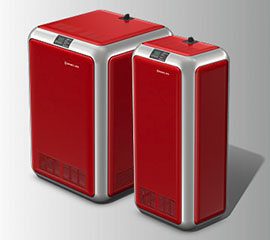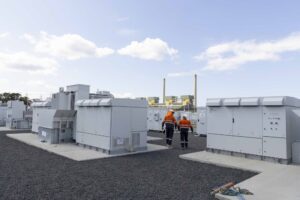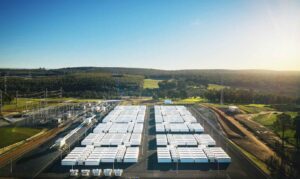German company Senec-IES has begun shipping its battery storage units to the fast-growing Australian storage market, with 2,000 units to be supplied in the first six months of 2017. Senec’s Australian product launch is to be held in Perth later today (Wednesday).
With some of the most attractive economics for battery systems to be added to residential and small commercial PV arrays, Australia is continuing to attract major battery suppliers.
 LG Chem is currently the Australian distributed battery market leader, with Enphase, Tesla, Sonnen, ABB, TrinaSmart, GCL and BYD also present. Germany’s SolarWatt is expected to join the burgeoning field in the coming weeks.
LG Chem is currently the Australian distributed battery market leader, with Enphase, Tesla, Sonnen, ABB, TrinaSmart, GCL and BYD also present. Germany’s SolarWatt is expected to join the burgeoning field in the coming weeks.
Germany’s Senec is the latest to launch in the market, signing a 2,000-unit supply deal for the first six months of this year. The first shipment of Senec’s HOME Li Home Energy Storage System has arrived in Australia, with the “million dollar deal” already accounting for 40 percent of Senec’s forecast export sales for the year.
Perth-based Ian Parkinson signed the import partnership deal and will assume the role of Senec brand representative in Australia and New Zealand.
“We recognized the need for high-quality energy storage systems early on and are glad to have found a partner which combines many years of experience in this field with the quality “Made in Germany”,” Parkinson (no relation to RenewEconomy editor Giles Parkinson) said in a statement.
Parkinson, along with Senec representatives from Germany, will present the Senec lithium-ion residential battery system to distributors, installers, and media at an event in Perth later today. Around 100 attendees are expected.
“Australia is one of the world’s largest and one of the most recent markets for home storage systems,” said Sven Albersmeier-Braun, head of international business development at Senec.
Albersmeier-Braun will attend the launch event today and indicates that both new PV system installations and homes with existing arrays present opportunities for Senec.
“Our forecasts unmistakably point in one direction: the current base and expansion of photovoltaic plants combined with already high and continuously rising prices for energy will lead to a rapid increase in demand for power storage units in the coming years.”
Senec, based in Leipzig in eastern Germany, has grown rapidly in its domestic market since 2009, where it has a fierce rivalry with compatriot firm Sonnen. Like Sonnen, Senec has been instrumental in introducing intelligent storage systems, with its Senec.Cloud, to optimize self-consumption of PV electricity produced onsite.
Alongside this, Senec has been advancing the use of distributed storage systems for grid services, like primary reserve control or frequency regulation.
By doing so, distributed storage systems can generate an additional revenue stream, improving the economics of battery storage, particularly important in countries where there are fewer daylight hours, such as Germany.
“The units for Australia are rolling off the production line and the first systems already arrived in Perth beginning of January,” said Senec founder Mathias Hammer.
“Preorders will be accepted from now on.” Hammer notes that Senec is currently present in Austria and Italy, alongside Germany, and is looking to use its Australian operations as a basis for further internationalization.








